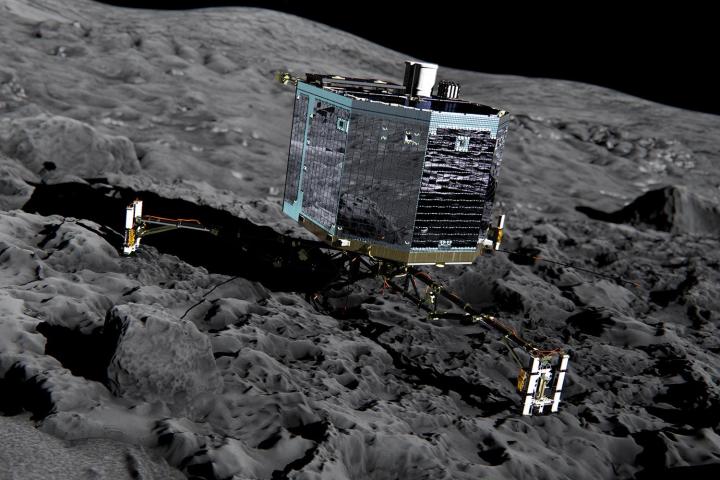
Hello Earth! Can you hear me? #WakeUpPhilae
— Philae Lander (@Philae2014) June 14, 2015
“Hello Earth! Can you hear me?” tweeted the Philae Lander on Sunday. The reawakening is a hugely dramatic and exciting moment for the European Space Agency and space enthusiasts worldwide, with ESA team members unsure whether anything would be heard from the lander ever again.
The new twist is the latest chapter in a story that’s over a decade long: The probe carrying the Philae Lander was launched in March 2004. Scientists are hoping Philae can provide invaluable information about the ice and rocks that make up comets and give us a greater understanding of their composition as they fly through space.
“Philae is doing very well: It has an operating temperature of minus 35 degrees Celsius [minus 31 degrees Fahrenheit] and has 24 watts available,” explains DLR Philae Project Manager Dr. Stephan Ulamec on the ESA blog. “The lander is ready for operations. We have also received historical data — so far, however, the lander had not been able to contact us earlier.”
Just a few days ago the ESA released new images of Comet 67P, pointing to spots that might mark the final landing place of Philae. The lander was believed to be in a deep, dark valley, hidden from sunlight, but over the next few days the research team will have a much better chance of being able to pinpoint its location.
“There is some relief also, because the very low temperatures endured by the lander in recent months could have done irreparable damage to some of the circuitry,” writes the BBC science correspondent Jonathan Amos. “The fact that both the computer and transmitter have fired up indicate that the engineering has stood up remarkably well to what must have been really quite extreme conditions. Scientists must now hope they can get enough power into Philae to carry out a full range of experiments.”
Editors' Recommendations
- Japan’s lunar lander surprises team by waking up from cold lunar night
- NASA’s InSight lander finally buries its probe beneath Martian surface
- Remember that alien comet? Scientists figured out what it’s made of
- Scientists come up with a method to make oxygen from moon dust
- Scientists spot first alien gases from interstellar comet


